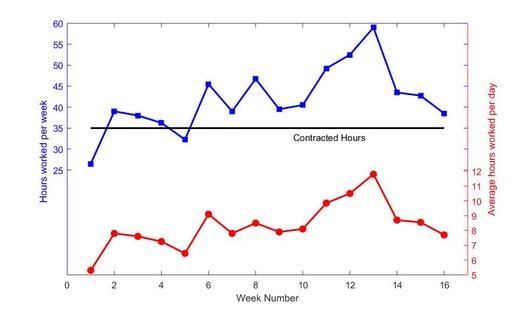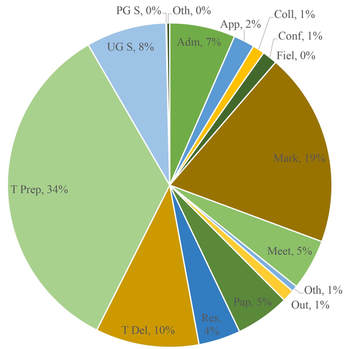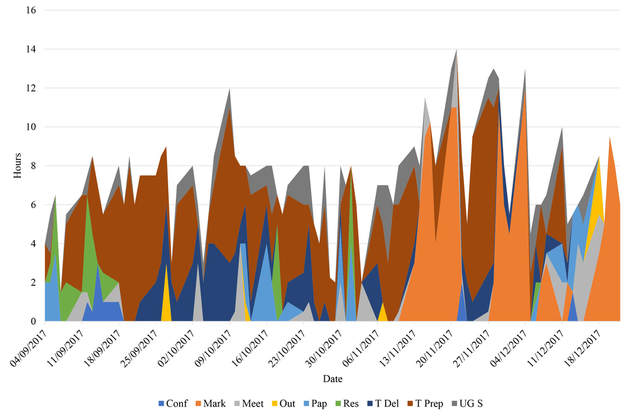|
In September 2017 I started my second short-term contract as a Teaching Associate at the University of Sheffield. I started my first teaching contract in July 2016, following a short and low-paid research contract after my PhD. The past year and a bit have been a steep learning curve, life as a PhD student really didn't do much to prepare for the teaching (and admin) side of academia. So at the start of this term I decided to track my working day to see what I spent my time on and how long I actually spent working! I also thought that this would make an interesting blog post and may provide others with an insight into what life is like as a Teaching Associate/Early Career Academic. To track my work I created a number of categories for types of work that I conducted. Table 1 gives a summary of these. For every working day I then noted down how many hours I had spent on each. Note: these are approximate estimates, i.e., I don't have the time to account for everything to the exact minute. I have then investigated my working week and the types of work conducted (continues below Table 1). Disclaimer: these are my personal experiences and may not represent workload/experiences at other universities or even different departments in the same university. Table 1: A summary of different categories of work conducted over the year and their descriptions.
Overall, from the start of my new contract up to Christmas there were 16 working weeks. Here are some general figures from this period:
I can then take a look at how this was distributed throughout the term, see Figure 1. In general, student presence, which was mainly between the weeks 5 and 14, was accompanied by an increasing workload week on week. There was a large range in my hours worked per week, peaking at almost 60 hours in Week 13, which was mostly associated with marking. On average I worked 6.8 hours per week more than my contracted hours. Figure 2 then shows which categories of work I spent the most of my time on. Here are the top 5:
I then took a look at the distribution of selected tasks on a daily basis (Figure 3) to look at whether the type of tasks changed throughout the term. The major differences we can see here are the huge increase in marking towards the end of term. At the same time, teaching preparation levels are maintained at a similar level, whilst teaching delivery is quite variable week-to-week. The majority of workload increase can therefore be attributed to marking at the back end of term. As an interesting aside I also compared the number of hours "allocated" in the department workload model for my teaching responsibilities which is encompassed by the categories for: teaching delivery, teaching prep, marking, and undergraduate supervision; to the actual time I spent on these.
So there we go, a snapshot look at life as a University Teaching Associate. Comments are closed.
|
Archives
July 2023
|




 RSS Feed
RSS Feed